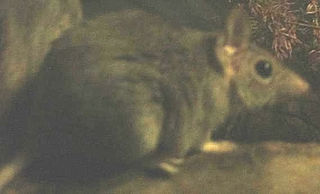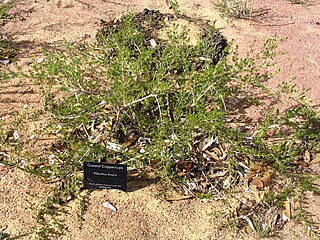
Dimitrie Ghica or Ghika was a Romanian politician. A prominent member of the Conservative Party, he served as Prime Minister between 1868 and 1870.

Kings Park is a 399.9-hectare (988-acre) park overlooking Perth Water and the central business district of Perth, Western Australia.

Octavian Ioan Atanase Bellu is the current head of the Romanian national women's artistic gymnastics team.

The fawn antechinus is a species of small carnivorous marsupial found in northern Australia. It is the only Antechinus to be found in the Northern Territory and has a patchy, restricted range.

Dasypus bellus, the beautiful armadillo, is an extinct armadillo species endemic to North America and South America from the Pleistocene, living from 1.8 mya—11,000 years ago, existing for approximately 1.789 million years.
The 2007 World Figure Skating Championships was a senior international figure skating competition sanctioned by the International Skating Union. Medals were awarded in the disciplines of men's singles, ladies' singles, pair skating, and ice dancing. The event was held at the Tokyo Metropolitan Gymnasium in Tokyo, Japan from March 20 to 25.

Genicanthus bellus, the ornate angelfish, bellus angelfish or bellus lyretail angelfish, is a species of marine ray-finned fish, a marine angelfish belonging to the family Pomacanthidae. It is found in the Indo-Pacific region.

Chamelaucieae is a tribe of flowering plants within the family Myrtaceae, mostly from Australia, with a few species in New Caledonia and south-east Asia.

Pileanthus is a genus of flowering plants in the family Myrtaceae, endemic to Western Australia. Collectively referred to by the common name coppercups, the eight currently recognised species are:
Cortinarius bellus is a basidiomycete fungus of the genus Cortinarius native to New Zealand, where it grows under Nothofagus and produces purple mushrooms that can grow in fairy rings.

Corymbia bella, commonly known as ghost gum, weeping ghost gum, or paper-fruited bloodwood, is a species of tree that is endemic to northern Australia. It has smooth, powdery, white to pale grey bark, lance-shaped adult leaves, flower buds in groups of three, creamy white flowers and cup-shaped, barrel-shaped or urn-shaped fruit.
Pileanthus aurantiacus is a plant species of the family Myrtaceae endemic to Western Australia.

Pileanthus filifolius, commonly known as summer coppercups, is a plant species of the family Myrtaceae endemic to Western Australia.

Pileanthus limacis, commonly known as coastal coppercups, is a plant species of the family Myrtaceae endemic to Western Australia.

Pileanthus peduncularis, commonly known as coppercups, is a plant species of the family Myrtaceae endemic to Western Australia.
Pileanthus rubronitidus is a plant species of the family Myrtaceae endemic to Western Australia.
Pileanthus septentrionalis is a plant species of the family Myrtaceae endemic to Western Australia.

Pileanthus vernicosus is a plant species of the family Myrtaceae endemic to Western Australia.
Marachernes bellus is a species of pseudoscorpion in the Chernetidae family. It is endemic to Australia. It was described in 1992 by Australian arachnologist Mark Harvey. The specific epithet bellus refers to the species’ beauty.














